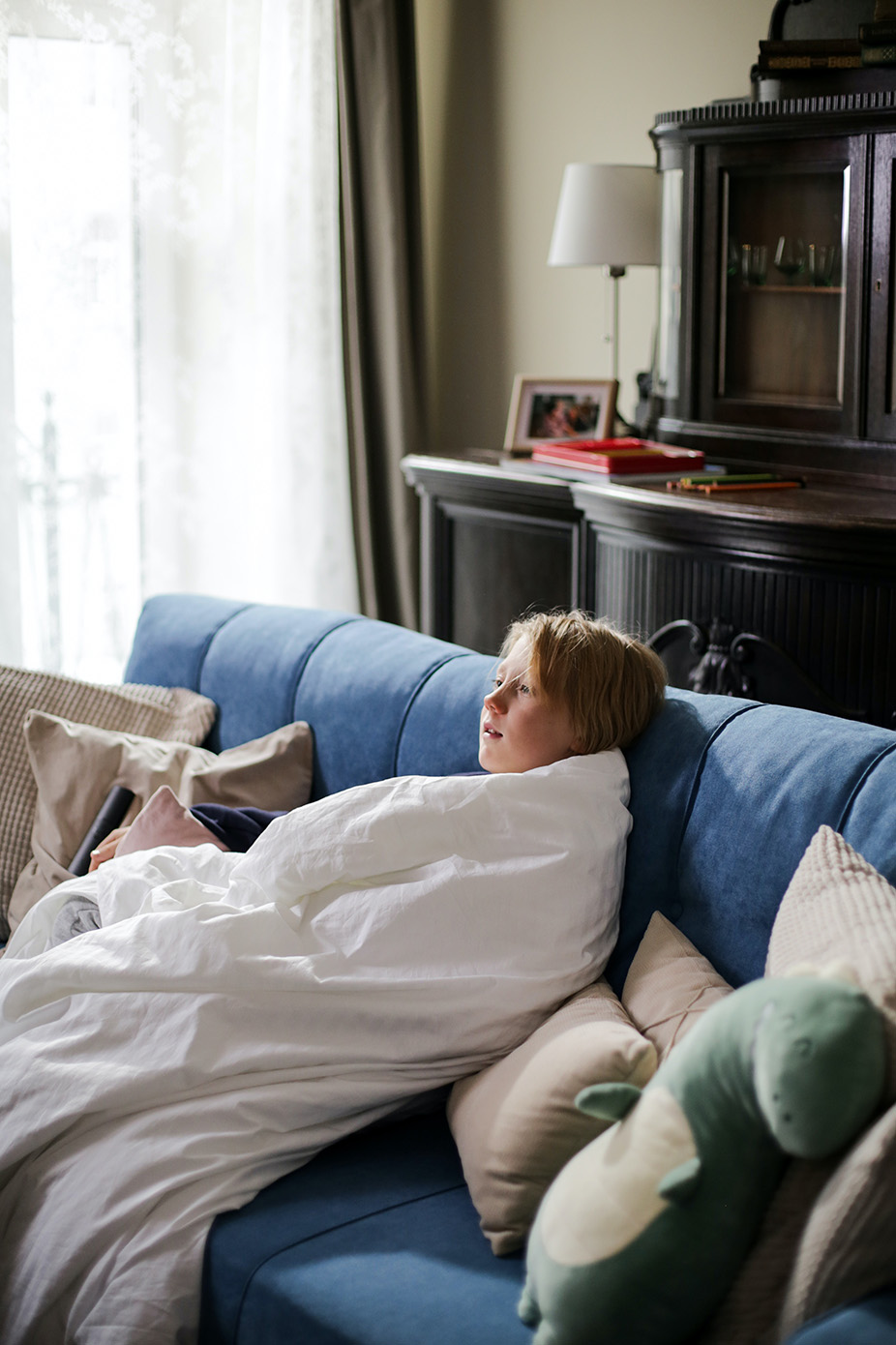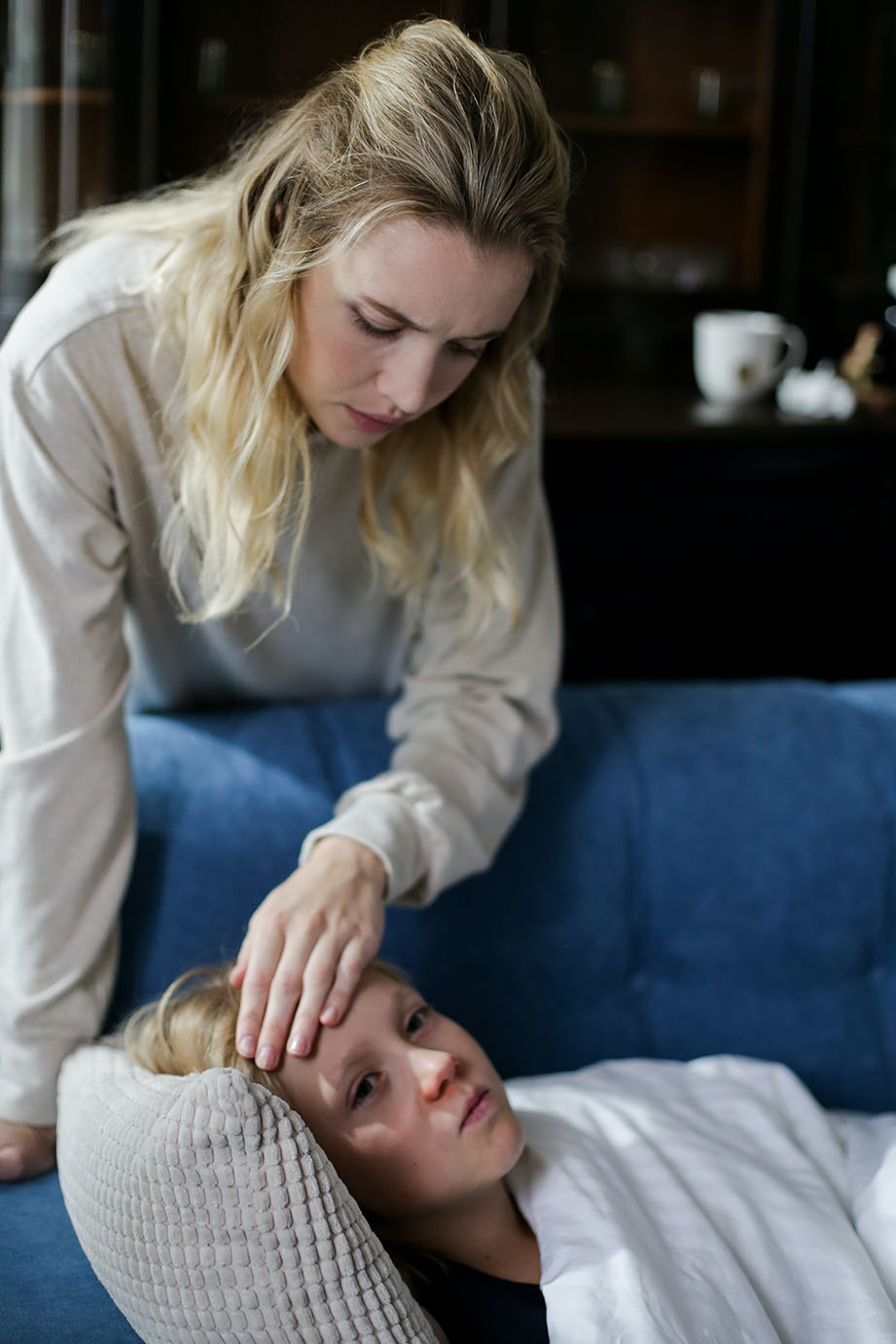Urgent Care
Diagnosis, treatment, and services for your everyday medical needs such as flu shots and lab work.

After the rise of COVID-19, it is hard to not be frightened of contagious viruses and infections. Our world can be an unforgiving place and when it comes to protecting our youth, things can be that much more intimidating. The truth of the matter is that at some point your child is going to get sick and when that happens you should be informed as much as humanly possible. With that being said, measles should be at the top of your list.
Measles is an extremely contagious respiratory infection. It causes a total-body skin rash and flu-like symptoms. Measles is rare in the United States thanks to widespread immunization, but millions of cases happen worldwide every year.
Measles (also called rubeola) is caused by a virus, so there is no specific medical treatment for it—the virus has to run its course. A child who is sick with measles should drink plenty of liquids, get lots of rest, and stay home from school or daycare to prevent the spreading of the infection.
The first symptoms of a measles infection are usually a hacking cough, runny nose, high fever, and red eyes. Kids also may have small red spots with blue-white centers inside the mouth before the rash starts.
The rash breaks out 3–5 days after symptoms start, sometimes along with a high fever of up to 104°F (40°C). The red or reddish-brown rash usually begins as flat red spots on the forehead. It spreads to the rest of the face, then down the neck and torso to the arms, legs, and feet. The fever and rash slowly go away after a few days.
Measles is very contagious. Believe it or not, 9 out of 10 people who aren’t vaccinated for measles will get it if they are near an infected person.
Measles spreads when people breathe in or have direct contact with the virus-infected fluid. It can pass through droplets sprayed into the air when someone with measles sneezes or coughs. Someone exposed to the virus usually shows symptoms 7–14 days later.
Children with measles can spread the disease from 4 days before the rash starts until about 4 days after that. They’re most contagious when they have a fever, runny nose, and cough. Those with weak immune systems due to other conditions (like HIV and AIDS) can spread the measles virus until they recover.
Even though there is no specific medical treatment for measles, you can help your child by encouraging extra rest and giving them a non-aspirin fever medicine, such as acetaminophen or ibuprofen. Also, children with measles should be kept away from others for 4 days after their rash appears. For those with a weak immune system, this should continue until they make a full recovery, and all symptoms are gone.
A measles infection can last for several weeks. Symptoms usually start 7–14 days after someone is exposed to the virus.
The best way to protect your kids is to make sure they’re immunized against measles. For most children, measles protection is part of the measles-mumps-rubella vaccine (MMR) or measles-mumps-rubella-varicella vaccine (MMRV) given when they’re 12 to 15 months old and again when they’re 4 to 6 years old. The vaccine can be given to babies as young as 6 months old if they will be traveling internationally. It’s important to speak to your healthcare provider to see when the vaccine is needed.
Widespread immunization has made measles rare in the U.S., but outbreaks still happen. With that being said, measles outbreaks have been increasing worldwide, mostly due to people not being vaccinated. It’s important for all kids who can get the vaccine to get it on time. At-risk people (such as those with weak immune systems) can’t get the vaccine. But when a lot of other people are immunized against a disease, it protects them, prevents the disease from spreading, and helps prevent outbreaks.
Even though we are fortunate enough to live in a country that is mostly protected from measles, it is important to be aware of the signs and symptoms because it’s still possible to contract it. The truth is, we would rather live our lives in peace and not worry about such things, which is why the experts at Chai Care have your back. If you ever believe your child or loved one to be infected with measles or struggling with a different everyday medical emergency, our dedicated staff will always be here to offer a helping hand!
* Legal disclaimer: The content of this article and the entire Chai Care blog is for educational purposes only; it does NOT constitute medical advice and must not be considered as such. Please consult a medical professional regarding any symptoms or health concerns you or your loved ones.

Probably the most notorious and most well-known illness a childhood illness catches is chickenpox. This infection is virtually unavoidable and when a child does contract it, you’ll be the first to know due to its obvious symptoms and your child complaining of severe discomfort. It’s one of those nasty viruses that almost every person suffers from when they are a youngster but even though it is treatable, it is important to know the signs and symptoms to not spread it to any other children.
So, what exactly is Chickenpox? Essentially, it is a viral infection that causes your child to have a fever and an itchy rash with spots all over their body. Once upon a time, chickenpox was a common childhood illness in the United States, especially in kids under age 12, but thankfully it is much rarer now, thanks to the varicella vaccine.
Chickenpox is caused by the varicella-zoster virus (VZV). This virus also can cause a painful skin rash called shingles (herpes zoster) later in life. After someone has had chickenpox, the virus stays dormant in the nervous system for the rest of a person’s life. It’s worth mentioning that the virus can reactivate later in life as shingles, however, kids who are vaccinated against chickenpox are much less likely to develop shingles when they get older.
Typically, chickenpox starts without the classic rash, with a fever, headache, sore throat, or stomachache. These symptoms may last for a few days, with the fever in the 101°–102°F range. After this, the red, itchy skin rash usually starts on the belly or back and face. After this, it spreads to almost everywhere else on the body, including the scalp, mouth, arms, legs, and genitals.
The rash begins with many small red bumps that look like pimples or insect bites. They appear in waves over 2 to 4 days, then develop into thin-walled blisters filled with fluid. The blister walls break, leaving open sores, which finally crust over to become dry, brown scabs. All three stages of the chickenpox rash (red bumps, blisters, and scabs) appear on the body at the same time. Sometimes the rash may spread wider or be more severe in kids who have weak immune systems or skin disorders like eczema.
Thankfully, symptoms are usually mild among children but may be life-threatening to children, adults, and people with impaired immune systems or healthy infants. Symptoms to look out for are fatigue, irritability, an itchy, red rash that progresses to tiny, fluid-filled blisters, fever, decreased appetite, muscle and/or joint pain, and a cough or runny nose.
The symptoms of chickenpox may resemble other skin problems or medical conditions. Making it important to consult your child’s healthcare provider for a legitimate diagnosis.
Chickenpox is very contagious. Most kids with a sibling who’s infected will most likely contract it and will show symptoms about 2 weeks after the first child does. If you do have multiple children, make sure the child with chickenpox covers their nose and mouth when sneezing or coughing. Because chickenpox is so contagious, a child who has it should stay home and rest until the rash is completely gone and all the blisters have dried. This takes about 1 week, but if you are unsure about whether your child is ready to return to school, ask your healthcare provider.
Medical professionals can usually diagnose chickenpox just by looking at the obvious rash. From there, they can guide you in watching for complications and in choosing different medicine to ease your child’s itching. It’s important that if you take your child to their healthcare provider to let the staff know ahead of time that your child might have chickenpox to not expose other kids in the office — for some children, a chickenpox infection could cause serious complications.
Since a virus causes chickenpox, antibiotics cannot treat it. But antibiotics are needed if bacteria infect the sores. This usually happens when kids scratch and pick at the blisters. An antiviral medicine might be prescribed for people with chickenpox who are at risk for complications, but this will depend on the child’s age, health, the extent of the infection, and the timing of treatment.
The great news is that chickenpox can be prevented! Most children who get the chickenpox vaccine will not get chickenpox. And if they do get chickenpox, their symptoms will be much milder. Healthcare providers highly recommend that kids receive the vaccine when they’re 12–15 months old and a booster shot when they’re 4–6 years old. Children 6 years of age and older who have never had chickenpox and aren’t vaccinated can and should get two doses of the vaccine and kids who have had chickenpox do not need the vaccine — they usually have lifelong protection against the illness.
The best to way to help the itchiness and discomfort of chickenpox is by using a cool wet compresses or giving your child a bath in lukewarm water every 3–4 hours for the first few days. It’s worth mentioning that oatmeal bath products can help to relieve itching. Other methods of pain relief would be patting (not rubbing) the body and putting calamine lotion on itchy areas.
To prevent scratching, it’s best to use mittens or gloves on your child’s hands to avoid scratching during sleep and trim their fingernails to keep them clean.
If your child has blisters in the mouth, give cold, soft, bland foods because chickenpox in the mouth can make it hard to drink or eat. Avoid anything acidic or salty, like orange juice or pretzels.
Most chickenpox infections don’t need special medical treatment but, in some cases, unexpected problems can happen. You should call your healthcare provider if your child has a fever that lasts for more than 4 days, has a severe cough or trouble breathing, has an area of rash that leaks pus, has a severe headache, or lastly, has a stiff neck.
In most cases, chickenpox is not something to lose sleep over. Nearly every child gets it and even though watching your child in agony is unpleasant, this virus goes away quickly and will soon become a thing of the past. Even though there are many ways you can treat your child at home, it is still best to take your kid to their healthcare provider and the experts at Chai Care will always be here to offer their top-notch service as they supply your little one with exceptional care!
* Legal disclaimer: The content of this article and the entire Chai Care blog is for educational purposes only; it does NOT constitute medical advice and must not be considered as such. Please consult a medical professional regarding any symptoms or health concerns you or your loved ones.